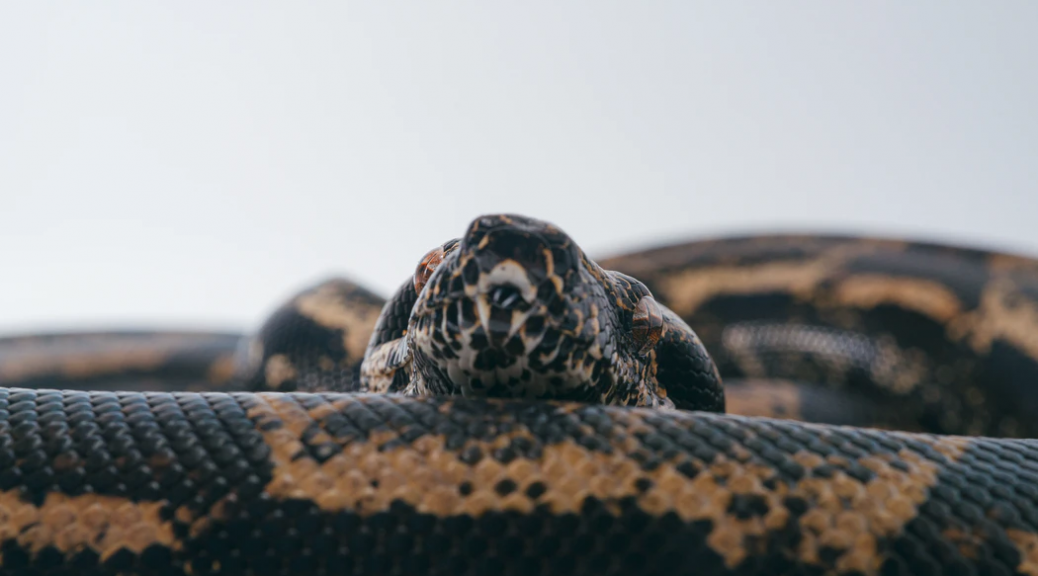Check just about any online page naming the biggest human fears, and you’ll find that snakes make most, if not all, of the rankings. This fact of life is somewhat unfortunate for Los Angeles residents since the city of Angels’ dry climate attracts snakes. The more well-known snake varieties in southern California include:
- Racers
- Garter snakes
- Rattlesnakes
- Common water snakes
Venomous Los Angeles snakes are less common and include species like rattlesnakes and copperheads. Angelenos can raise their safety by understanding the differences between poisonous and venomous snakes. Let’s examine some of the elements that distinguish venomous snakes from their less dangerous counterparts.
How to Tell if a Snake Is Venomous
Running into a venomous snake on your property or a weekend hike at Runyon Canyon isn’t out of the question. The fact that venomous snakes can always be near, sneakily hiding under rocks and bushes, further emphasizes the importance of preparedness.
Eyes
You can assess a snake’s threat level by its eyes. Venomous snakes are going to have slit-like pupils that resemble a cat, while non-venomous snake eyes are going to contain a more rounded shape.
Color
Solid-colored snakes are less likely to present danger, while snakes with colorful patterns on their skin should warrant some extra caution. An example of a dangerous snake with a distinct color pattern is the coral snake with red next to yellow.
Neck Shape
While it’s true that many non-poisonous snakes can have triangular heads, venomous snake heads are going to be a wider triangular variety. You can look at a snake’s neck for extra help when looking to distinguish non-venomous from venomous snakes. Dangerous snakes will have a neck that’s far skinnier than their head. This lack of proportion occurs since poisonous snakes hold their venom sack under their jaw.
Rattling Tail
Rattlers are one of the more well-known signs of poisonous snakes—specifically rattlesnakes. A certain percentage of snakes will drag their tails through leaves to mimic a rattlesnake’s defense mechanism. Any type of rattling noise from a snake should result in a quick exit, regardless of whether or not the animal is venomous.
Heat-Sensing Pit
A heat-sensing pit is a less noticeable feature of venomous snakes that sits between the animal’s eye and nose.
While these are all useful signs to watch out for, it’s essential to keep a safe distance from snakes during encounters to reduce your chances of becoming a bite victim. Let’s jump right into how you can respond if you find yourself bitten by a venomous snake.
How to Respond to a Venomous Snake’s Bite
Time is of the essence when it comes to treating a venomous snake bite. Immediate medical attention is essential, as some snake venom varieties require vast amounts of antivenom for a victim to survive. Here are some various ways you can help yourself in the event of a venomous snake bite:
- Call 911 or seek nearby medical support.
- Don’t attempt to remove the venom.
- Keep the bitten portion of your body still.
- Abstain from alcohol and caffeine.
- Try to remember the snake’s appearance for your treatment.
You can achieve some extra peace of mind knowing that snakes are going to avoid conflicts with humans whenever possible. Snakes that do injure humans are typically cornered and feeling threatened.
The Difference Between Venomous and Poisonous Animals
While snakes are sometimes interchangeably labeled as poisonous or venomous, snakes are venomous. Poisonous animals unload their toxins when something else eats them. A venomous species will bite or sting something to inject their toxins.
Technical terms aside, you might run into an instance where a professional wildlife removal service can help you get rid of your LA property snake problem.
Why You Should Enlist a Professional to Handle Your Property’s Snake Problem
Venomous and nonvenomous snakes can present dangers to you, your family members, and your pets. Removing a snake yourself without professional experience may lead to a life-threatening or, at the very least, an unpleasant bite. Keep yourself and those near you secure with the help of a professional snake removal service.
Are you a Los Angeles resident seeking help with your property’s snake problem? If you don’t currently have a snake problem, it can be helpful to have an LA snake removal company in mind if the need for a professional removal service arises.
LA Can Trust Animal Capture Wildlife Control for Snake Removal
Animal Capture Wildlife Control specializes in snake removal within the Los Angeles area. Our professionalism means that you’ll solve your snake problem efficiently, safely, and ethically. Animal Capture Wildlife Control traps snakes on your property and releases them into the wild instead of killing them. We’ll follow up our removal service with preventative measures that help you avoid future instances of a snake infestation. Snake fencing is an example of a strategy that deters snakes from living in a den on your property.
Take the stress out of Los Angeles snake removal by contacting Animal Capture Wildlife Control at 310-551-0901.
